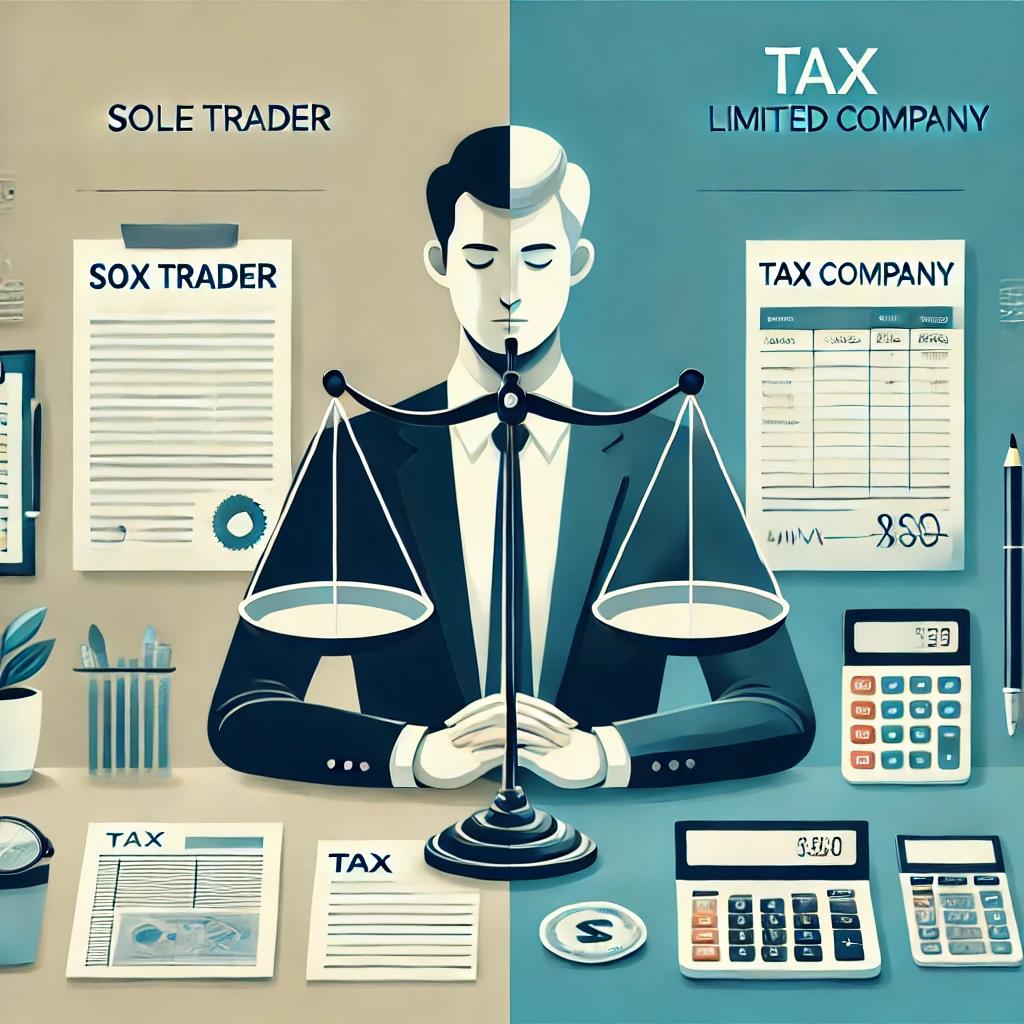Understanding Tax Implications: Sole Trader vs. Limited Company
When managing a side business in addition to your main job, it's important to understand the tax differences between operating as a sole trader and as a limited company. Here’s a breakdown of how each structure is taxed and its potential impact on your earnings.
Sole Trader (Self-Employed)
As a sole trader, you only need to register for taxes if your earnings exceed £1,000. However, if you experience losses, registering can be beneficial since you can claim those losses against other taxable income.
Taxes You Pay:
- Income Tax: Applied on profits exceeding the Personal Allowance (set at £12,570 for 2024/25 and 2025/26).
- Class 2 NICs: These apply if your profits exceed £12,570.
Class 4 NICs: These apply to profits above £12,570.
- Capital Gains Tax: This is charged on profits from selling assets related to your business, like shares.
Income Tax and NIC Rates for Sole Traders (2024/25 and 2025/26):
- Profits between £12,570 and £50,270 incur 20% Income Tax and 6% Class 4 NICs.
- Profits between £50,271 and £125,140 are taxed at 40% Income Tax and 2% Class 4 NICs.
- Profits over £125,140 face 45% Income Tax and 2% Class 4 NICs.
Key Points:
- It’s crucial to keep precise records of all sales and expenses to reduce your taxable income.
- You can claim all business-related expenses, such as office supplies, travel, and marketing. Expense claims should be those made wholly and exclusively for the business.
- If your business expenses are less than £1,000, a tax-free trading allowance applies.
Example: If you earn £40,000 from your main job and an additional £20,000 from your side business, your taxable income would be:
£40,000 + £20,000 - £12,570 = £47,430.
This amount is then taxed according to the rates mentioned.
Savings Tip: Consider saving 30% of your profits in a separate account to cover your tax liabilities, as the tax isn’t automatically deducted for sole traders.
Limited Company
Running a limited company means that your business is liable to pay Corporation Tax on its profits. This structure can offer more tax efficiency, especially for side projects.
Taxes You Pay:
- Corporation Tax: Set at 19% for profits up to £50,000, 26.5% effective rate for profits ranging from £50,000 - £250,000, and 25% for profits beyond £250,000.
- Income Tax and NICs: Applicable if you draw a salary or dividends from the company.
Dividend Tax Rates (2024/25 and 2025/26):
- First £500: 0% (dividend allowance)
- Up to £50,270: 8.75%
- £50,271 - £125,140: 33.75%
- Over £125,140: 39.35%
Key Points:
- As a director, you can structure your income through salary, dividends, or a mix of both. Taking dividends only is recommended for a side hustle since they are not subject to National Insurance Contributions (NICs). They are only subject to dividend tax using the rates above. There is no need for a payroll software. The only requirement is to keep the dividend vouchers and take it straight from the business bank account.
- It’s important to keep detailed records of any dividend payments to manage your finances effectively.
Example: For a company profit of £20,000:
- Corporation Tax: £20,000 x 19% = £3,800
- Remaining amount for dividends: £20,000 - £3,800 = £16,200. Use the table above to calculate the dividend tax due on this amount. This is payable through Self-Assessment.
Conclusion
The decision to operate as a sole trader or a limited company hinges on your business objectives and financial situation. Each structure carries unique tax implications, so understanding these can guide you in making informed choices to maximise your profits. Consulting with a financial adviser can provide personalised advice and ensure compliance with tax regulations.

